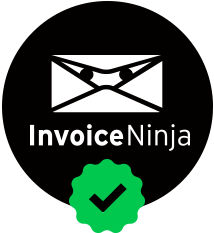Introduction
In the first part of this tutorial, we configured a CentOS 7 server with all the prerequisites required by Invoice Ninja. Now, let’s look at the process for installing, configuring and testing this invoicing software.
Install Composer
Invoice Ninja requires Composer in order to function. So, let’s install it:
# curl -sS https://getcomposer.org/installer | sudo php -- --install-dir=/usr/local/bin --filename=composer
All settings correct for using Composer Downloading... Composer (version 1.4.1) successfully installed to: /usr/local/bin/composer Use it: php /usr/local/bin/composer
Download Invoice Ninja
In
, download the latest release of the software, which, at the moment, is version 3.1.0:
# cd /var/www # wget https://download.invoiceninja.com/ninja-v3.1.0.zip
Unzip the archive:
# unzip ninja-v3.1.0.zip # cd ninja/
Install with Composer:
# composer install --no-dev -o
In the
directory, after this installation a file named
will appear. Rename and edit:
# mv .env.example .env # $EDITOR .env
Change lines 7-12 as follow:
DB_TYPE=mysql DB_STRICT=false DB_HOST=localhost DB_DATABASE=ininjadb DB_USERNAME=ininjausr DB_PASSWORD=usr_strong_password
Those are the values configured in MariaDB.
Save, exit, and make the same modifications in
:
'mysql' => [
'driver' => 'mysql',
'host' => env('DB_HOST', 'localhost'),
'database' => env('DB_DATABASE', 'ininjadb'),
'username' => env('DB_USERNAME', 'ininjausr'),
'password' => env('DB_PASSWORD', 'usr_strong_password'),
'charset' => 'utf8',
'collation' => 'utf8_unicode_ci',
'prefix' => '',
'strict' => env('DB_STRICT', false),
],
Save, exit and migrate:
# php artisan migrate
Next:
# php artisan db:seed # php artisan key:generate
The last function will print out an application key. Copy it.
For example:
Application key [base64:PS4zpjJgREp2INBr+hHHTLotLvBxnPk3IxmwvfIZtmc=] set successfully.
Next, edit the
file:
# $EDITOR config/app.php
In the
section edit the line as follows:
'key' => env('APP_KEY', 'base64:PS4zpjJgREp2INBr+hHHTLotLvBxnPk3IxmwvfIZtmc='),
Save, exit and change the owner of
:
chown -R nginx:nginx /var/www/ninja/
Configure Virtual Host
To configure the Virtual Host, first generate an SSL certificate (if a company already has one, this step is not necessary) :
# mkdir -p /etc/nginx/certs # openssl req -new -x509 -days 365 -nodes -out /etc/nginx/certs/ininja.crt -keyout /etc/nginx/certs/ininja.key # chmod 600 /etc/nginx/certs/*
Create a new Virtual Host file for Invoice Ninja:
# $EDITOR /etc/nginx/conf.d/ininja.conf
There, paste the following configuration:
server {
listen 443 default;
server_name mydomain.com www.mydomain.com;
ssl on;
ssl_certificate /etc/nginx/certs/ininja.crt;
ssl_certificate_key /etc/nginx/certs/ininja.key;
ssl_session_timeout 5m;
ssl_ciphers 'AES128+EECDH:AES128+EDH:!aNULL';
ssl_protocols TLSv1 TLSv1.1 TLSv1.2;
ssl_prefer_server_ciphers on;
root /var/www/ninja/public;
index index.html index.htm index.php;
charset utf-8;
location / {
try_files $uri $uri/ /index.php?$query_string;
}
location = /favicon.ico { access_log off; log_not_found off; }
location = /robots.txt { access_log off; log_not_found off; }
access_log /var/log/nginx/ininja.access.log;
error_log /var/log/nginx/ininja.error.log;
sendfile off;
location ~ \.php$ {
fastcgi_split_path_info ^(.+\.php)(/.+)$;
fastcgi_pass unix:/var/run/php-fpm-ninja.sock;
fastcgi_index index.php;
include fastcgi_params;
fastcgi_param SCRIPT_FILENAME $document_root$fastcgi_script_name;
fastcgi_intercept_errors off;
fastcgi_buffer_size 16k;
fastcgi_buffers 4 16k;
}
location ~ /\.ht {
deny all;
}
}
server {
listen 80;
server_name mydomain.com www.mydomain.com;
add_header Strict-Transport-Security max-age=2592000;
rewrite ^ https://$server_name$request_uri? permanent;
}
Save, exit and test configuration using this code:
# nginx -t
Then, restart NGINX:
# systemctl restart nginx
Configure SELinux
First of all, check the SELinux status with:
# getenforce
If the output is
or
, it means that SELinux is enabled.
Install its management tools, available in repositories:
# yum install policycoreutils-python
Next, to allow Invoice Ninja to run in
mode, execute the following commands:
# semanage fcontext -a -t httpd_sys_rw_content_t '/var/www/ninja(/.*)?' # semanage fcontext -a -t httpd_sys_rw_content_t '/var/www/ninja/public(/.*)?' # semanage fcontext -a -t httpd_sys_rw_content_t '/var/www/ninja/storage(/.*)?' # semanage fcontext -a -t httpd_sys_rw_content_t '/var/www/ninja/app(/.*)?' # semanage fcontext -a -t httpd_sys_rw_content_t '/var/www/ninja/bootstrap(/.*)?' # semanage fcontext -a -t httpd_sys_rw_content_t '/var/www/ninja/config(/.*)?' # semanage fcontext -a -t httpd_sys_rw_content_t '/var/www/ninja/database(/.*)?' # semanage fcontext -a -t httpd_sys_rw_content_t '/var/www/ninja/resources(/.*)?' # semanage fcontext -a -t httpd_sys_rw_content_t '/var/www/ninja/vendor(/.*)?' # semanage fcontext -a -t httpd_sys_rw_content_t '/var/www/ninja/tests(/.*)?' # restorecon -Rv '/var/www/ninja/'
Now, configure a firewall. To do this, use
:
# yum install firewalld # systemctl start firewalld # systemctl enable firewalld
Now, use it to open ports for Invoice Ninja:
# firewall-cmd --permanent --add-service=https # firewall-cmd --permanent --add-service=http # firewall-cmd --reload
With this, SELinux and firewalld are correctly configured.
Conclusion
The last step is to go to https://mydomain.com (change it with your domain) and “graphically” finish the Invoice Ninja configuration. Enter the database, email and others user information. At the end, the Invoice Ninja will appear, and it will be possible to start managing your invoicing system!





